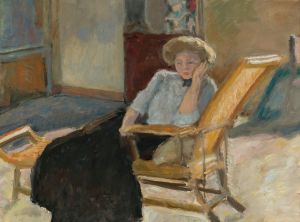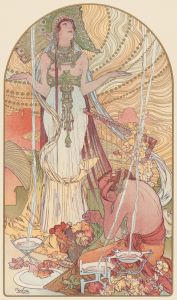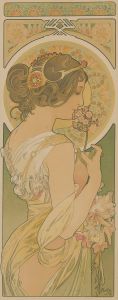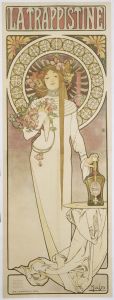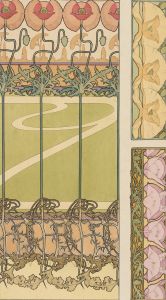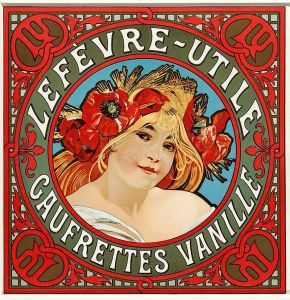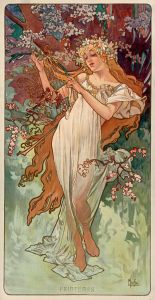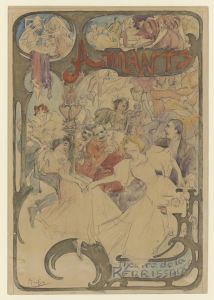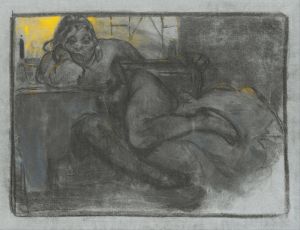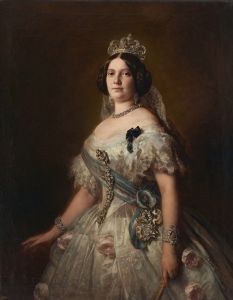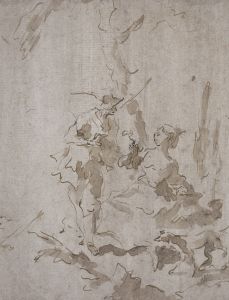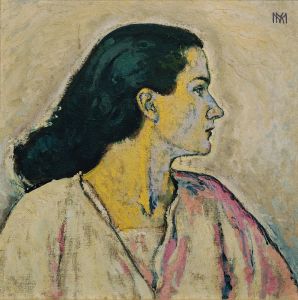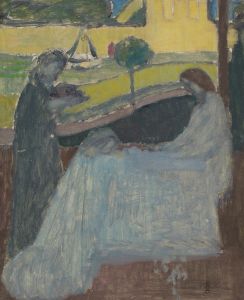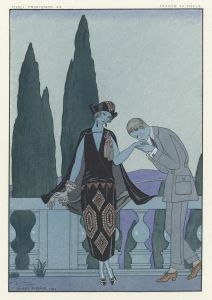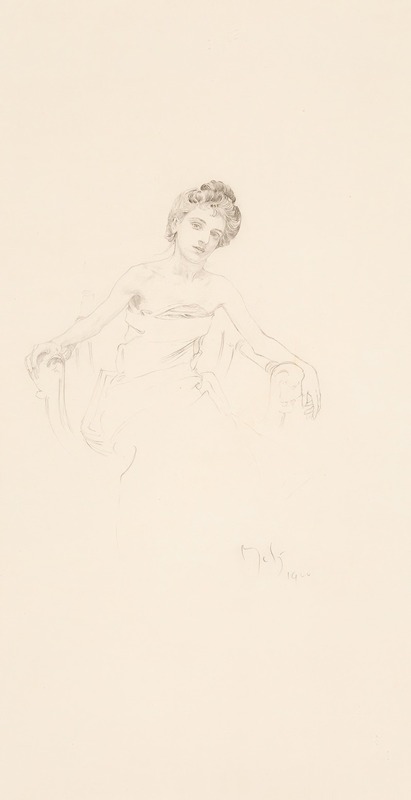
Étude de femme
A hand-painted replica of Alphonse Mucha’s masterpiece Étude de femme, meticulously crafted by professional artists to capture the true essence of the original. Each piece is created with museum-quality canvas and rare mineral pigments, carefully painted by experienced artists with delicate brushstrokes and rich, layered colors to perfectly recreate the texture of the original artwork. Unlike machine-printed reproductions, this hand-painted version brings the painting to life, infused with the artist’s emotions and skill in every stroke. Whether for personal collection or home decoration, it instantly elevates the artistic atmosphere of any space.
Alphonse Mucha, a renowned Czech painter and decorative artist, is best known for his distinct Art Nouveau style that became synonymous with the movement. One of his notable works is "Étude de femme," which translates to "Study of a Woman." This piece exemplifies Mucha's mastery in capturing the elegance and beauty of the female form, a recurring theme in his oeuvre.
"Étude de femme" is a drawing that showcases Mucha's exceptional skill in draftsmanship. The artwork features a detailed and delicate portrayal of a woman's face and upper body. Mucha's use of fine lines and subtle shading brings a lifelike quality to the subject, highlighting his ability to convey texture and depth with minimalistic means. The woman's serene expression and flowing hair are characteristic elements of Mucha's style, reflecting his fascination with the natural grace and poise of his subjects.
Mucha's approach to art was heavily influenced by his background and the cultural milieu of his time. Born in 1860 in Ivančice, Moravia (now part of the Czech Republic), Mucha moved to Paris in 1887, where he became a central figure in the Art Nouveau movement. His work gained widespread recognition through his posters for the famous actress Sarah Bernhardt, which led to numerous commissions and a prolific career.
"Étude de femme" is part of Mucha's extensive body of work that includes posters, illustrations, paintings, and designs for jewelry, wallpaper, and theatre sets. His art is characterized by its ornate and decorative style, often featuring intricate patterns, floral motifs, and harmonious compositions. Mucha's women are typically depicted with flowing hair and draped clothing, embodying an idealized form of beauty that was highly influential in the visual culture of the late 19th and early 20th centuries.
The significance of "Étude de femme" lies not only in its aesthetic appeal but also in its representation of Mucha's artistic philosophy. Mucha believed that art should be accessible and uplifting, a sentiment that is evident in the graceful and approachable nature of his subjects. His work aimed to celebrate beauty and inspire a sense of wonder and admiration in the viewer.
Mucha's legacy extends beyond his contributions to the Art Nouveau movement. His influence can be seen in various aspects of modern design, and his works continue to be celebrated and studied for their artistic and cultural impact. "Étude de femme" remains a testament to Mucha's talent and his enduring vision of beauty.
In summary, "Étude de femme" by Alphonse Mucha is a quintessential example of the artist's skill in capturing the elegance of the female form through his distinctive Art Nouveau style. The drawing reflects Mucha's broader artistic contributions and his lasting influence on the world of art and design.





